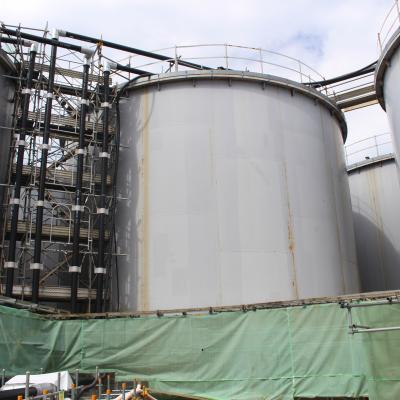Radioactive Water Release Plans Announced
1 km Tunnel To Disperse Contaminated Water Into Sea
7 Jan 2022 by The Water Diplomat
TOKYO, Japan
Japan’s government has outlined plans on how it will dispose of 1.37 million tons of contaminated water from the ill-fated Fukushima power plant.
The decommissioning work involves tunnelling diluted radioactive water from the Fukushima site into the ocean.
Wastewater from the 2011 Fukushima disaster is currently housed in over 1000 storage tanks at a cost of $870 Million USD a year. The government and Tokyo Electric Power Company (TEPCO) warned last year that storage space is at a premium and the site would reach full capacity before the end of 2022.
Plans to discharge the treated water via a 1km tunnel into the ocean approximately 12 meters deep have been submitted to the Nuclear Regulation Authority. It is estimated that the decommissioning project could last for 30 years.
TEPCO stated in a press release: “We have submitted the Application documents for Approval to amend the Implementation Plan for Fukushima Daiichi Nuclear Power Station Specified Nuclear Facility to the Nuclear Regulation Authority (NRA).”
The release went on to say: “TEPCO will continue to carefully listen to the opinions from people in the region and parties concerned and will incorporate opinions into the design and operations of facilities as appropriate.”
The government is being assisted by the International Atomic Energy Agency (IAEA) to help oversee decommissioning works and it hopes that their presence will relieve concerns held by the international community.
Last year Rafael Grossi, Director General of the IAEA, praised Japan’s proposals as, “A milestone that will help pave the way for continued progress.”
He added: ““Our cooperation and our presence will help build confidence – in Japan and beyond – that the water disposal is carried out without an adverse impact on human health and the environment.”
However local fishermen continue to oppose discharge plans. They argue that the reputational damage would be devastating to their industry and livelihoods.
TEPCO are using ALPS (Advanced Liquid Processing System) to treat the stored water before release into the ocean to ensure safety standards are met. ALPS removes 62 radioactive isotopes with the exception of tritium.
An advisory committee to Japan’s government concluded in a 2020 report that tritium is not dangerous to life in small amounts and is “naturally produced in nature.”
The latest release by TEPCO said: “Once the radionuclide in the water in the measurement/confirmation tank are uniformly dispersed, samples are taken and analyzed to confirm the water meets regulatory standards.
“The ALPS treated water is then transferred to the seawater pipe header using the transfer facility and mixed with the seawater.”
Regarding the tunnel, TEPCO said: “Because it goes through the rock base layer, the structure will be highly resistant against any earthquakes and the risk of water leakage will be low. The tunnel structure is designed considering the effects of typhoons and storm surges.”
TEPCO expects construction to begin in June to allow for the releasing of water by April 2023.
Related Topics
22 Oct 2021 TOKYO, Japan
New Prime Minister will implement plan to begin release of contaminated water into ocean; IAEA supports plan; local fishing industry and neighboring countries unconvinced.

16 Apr 2021 TOKYO, Japan
The Fukushima nuclear plant is running out of space to store radioactive water following its destruction in the 2011 earthquake and tsunami. Plans by owners TEPCOto begin dischargi...
